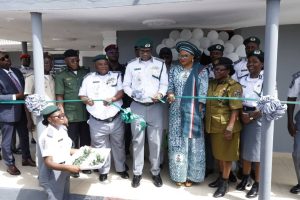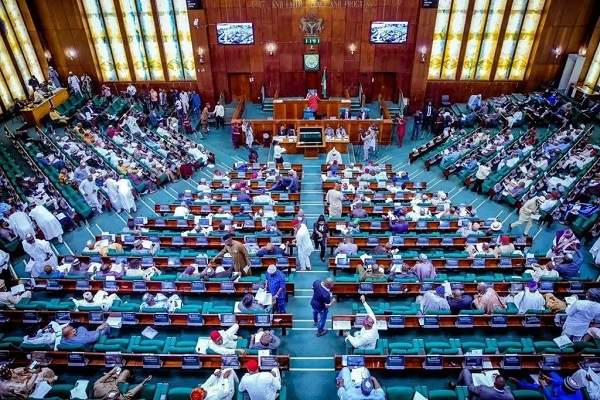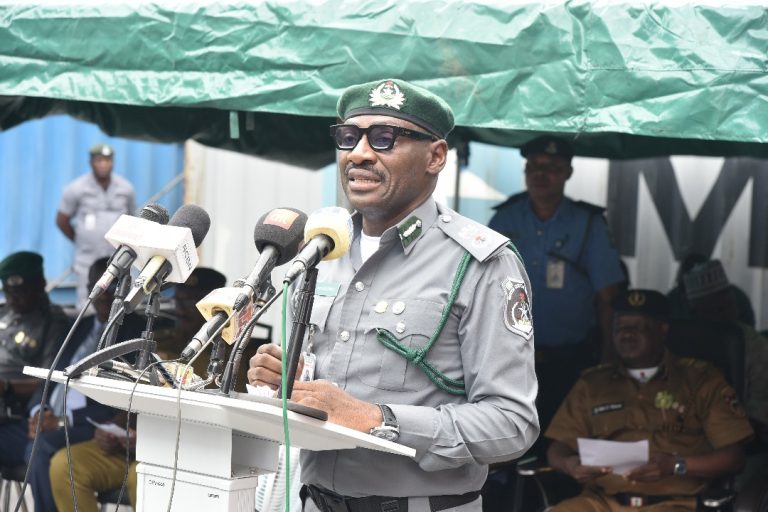- As Typhoon Haima leaves at least 4 dead in northern Philippines
Former President Olusegun Obasanjo on Tuesday declared that it was not the job of President Muhammadu Buhari to address the deadly clashes between herdsmen and farmers.
This is coming as he decried the increasing level of hunger being experienced by Nigerians across the country, stressing that it was sad to note that about 65 per cent of the citizens were faced with food insecurity.
He also urged the Federal Government to drastically reduce or ban the importation of staple food crops, as Nigeria had the potential to produce most of the agricultural products that were being imported into the country.
Obasanjo spoke during the 23rd Annual LAPO Development Forum which had as its theme ‘Food Security and Sustainable Agriculture in Nigeria: Challenges and Opportunities,’ and was organised by the Lift Above Poverty Organisation in Abuja.
The former President stated that he often got angry whenever people blamed Buhari for not making comments as regards the destruction done by herdsmen, noting that the issue was not a national but a state and local governments matter.
Obasanjo said, “And some of the words that have been coming out from our leaders, particularly from state governors, are not helpful; they are not helpful! This issue is not a federal issue and another thing I don’t like about it is that when you talk of Fulani herdsmen, people talk of the President.
“Now because the President of Nigeria is a Fulani man, then you would expect him to jump up and say this one is condemned and all that, no. That is not his job. And when people make comments like this, it annoys me. They say the President hasn’t said anything about this, that he used to be the patron of something…, but I believe that the ranching thing failed because the states and the local governments failed to do what they ought to have done.” He noted that during the colonial era, some areas were reserved as grazing zones in most parts of the North, but wondered what had happened to the grazing reserves and routes.
Obasanjo said, “I need to state that it is the responsibility of local governments to take care of them. Now, states should have even done a lot better, (but) they haven’t, and then when you have cattle rustling, herdsmen and farmers’ conflict, you try to make it a national issue. But it is not really a national issue. “For me, the herdsmen are entitled to be able to look after their animals but they are not entitled to destroy the crops of the rural farmers, it is unacceptable.”
The former President, however, wondered how Fulani herdsmen were able to arm themselves with sophisticated weapons and maintained that it was not necessary to take the issue to the National Assembly as it should be addressed at the state and local governments levels. On the level of hunger in the land, Obasanjo stated that the purchasing power of many households in Nigeria had plummeted and that food insecurity among Nigerians was rising fast.
“In 2016, the percentage of food insecure households increased from 33 per cent in February/March to 38 per cent in June/July, that is an increase of five per cent, which was as at June/July. We don’t know what it is now,” he said.
The former President explained that the reason why the naira had continued to fall against the United States’ dollar was because “the country spends more than it earns.” He called for a reduction of importation of certain items, particularly food items that could be produced in Nigeria, adding that it was “unpardonable for Nigerians to spend huge funds importing toothpicks.”
According to him, Nigeria’s appetite for imported products had made it difficult for the country to be able to produce enough food to feed itself. Obasanjo advised the government to see agriculture as a sector that had the capacity to lift Nigeria out of recession and recommended that efforts should be made to guarantee food security for Nigerians.
Earlier in his remarks, the Founder of LAPO, Dr. Godwin Ehigiamusoe, had stated that the forum was organised in order to focus on issues and challenges of development, as well as address the imperatives of food security within the context of diversification of the national economy.
In the meantime, at least five people were killed after Super Typhoon Haima smashed into the northern Philippines with ferocious winds and rains overnight, flooding towns and forcing thousands to flee before weakening Thursday and blowing into the South China Sea, officials said.
Haima’s blinding winds and rain had rekindled fears and memories from the catastrophe wrought by Typhoon Haiyan in 2013, but there were no immediate reports of any major damage amid faulty communications and power outages in several villages cut off from government aid and rescue teams by fallen trees, landslide and flood.
Nearly 100,000 villagers were evacuated from high-risk communities as the typhoon approached, helping prevent a larger number of casualties.
Two construction workers died, however, when a landslide buried their shanty in La Trinidad town in the mountain province of Benguet, officials said, while two villagers drowned in floodwaters and another is missing in Ifugao province, near Benguet. A 70-year-old man died apparently of a heart attack while being brought to an emergency shelter from a flooded neighborhood in Isabela province, officials said.
Although storms are a part of life in the country’s north, many villagers were still horrified by Haima’s fury.
“In my age, I’m 60 years old, this is the strongest typhoon I have ever seen,” village councilor Willie Cabalteja told The Associated Press in Vigan city in Ilocos Sur province. “We haven’t slept. Trees were forced down, houses lost their roofs and fences and metal sheets were flying around all night.”
The fast-moving Pacific typhoon slammed into shore in northeastern Cagayan province late Wednesday then barreled northwestward before blowing out into the South China Sea with sustained winds of 150 kilometers (93 miles) per hour and gusts of up to 185 kph (115 mph), according to forecasters.
Although weakening, the typhoon was expected to blow toward China, Filipino forecasters said.
After dawn, the extent of damage in Cagayan — about 500 kilometers (310 miles) north of Manila — and nearby regions became evident, with overturned vans, toppled or leaning electric posts and debris blocking roads. Most stores, their window panes shattered and canopies shredded by the wind, were close.
In northern Ilocos Sur province, ricefields resembled brown lakes under waist-high floodwaters, although cleanup operations had started.
“Search, rescue and retrieval operations are ongoing,” Office of Civil Defense administrator Ricardo Jalad said in a statement.
The government’s weather agency lowered most of its storm warnings after the typhoon blew out of the main northern Luzon region.
Many of the provinces hit by the storm were still recovering from a powerful typhoon that killed two people and displaced tens of thousands of villagers last weekend.
Philippine President Rodrigo Duterte, on a state visit to China, urged people in the typhoon’s path to heed orders by disaster agencies. Duterte is to fly home Friday.
About 20 typhoons and storms lash the Philippines each year, adding to the many burdens in a country that is also threatened by earthquakes and volcanic eruptions and considered one of the world’s most disaster-prone nations.
In November 2013, Typhoon Haiyan struck the central Philippines with ferocious power, leaving more than 7,300 people dead and displacing more than 5 million others after leveling entire villages.
The Citizen with additional report from MSN



















